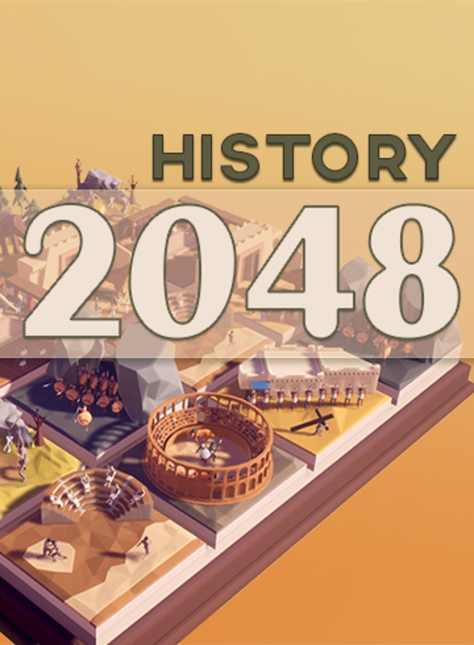
In retrospect, I read the title History 2048 both too literally and with little comprehension. When I first happened upon the game, browsing the Switch’s eShop, the name struck a chord. Paired with an appealing visual style and what seemed to be board game influenced gameplay, I was intrigued enough to make the purchase. It was on sale for only a couple of dollars, after all. Not once did I read the description on the game’s store page. If I had, or gave the game’s title a little more thought, I would’ve realized it was simply a 2048 clone with an attractive veneer.
Developed by purpleElephant, History 2048 was originally released for Android devices on April 28, 2017, with a Steam release following a couple of months later. It was ported to the Switch and published by Run-Down Games on March 1, 2019. Unfortunately, I haven’t been able to locate much information about either studio. Nor have I managed to reach “the end” of the game, to perhaps discover credits. Nonetheless, I’ll likely keep coming back to it for a long time to come. It’s the sort of game that’s easy to jump into and play for fifteen minutes as a palette cleanser, or time killer.

As I mentioned at the top, History 2048 is simply a clone of 2048, the popular tile-sliding puzzle game whose gameplay bears a striking resemblance to the excellent Threes! With the ubiquity of these clones, 2048 honestly refers more to a specific type of puzzle game than any single title in particular. Generally, they take place on a 4×4 grid and task the player with consolidating like tiles by sliding them into each other. But, every movement brings a new tile onto the board. In the case of this game, they happen to be stylized tiles representing specific eras of human history.
While it occasionally seemed like I made good progress by randomly selecting which way to shift the tiles, games were over quickly and I didn’t make it too far. It was a strategy with some merit, but if I wanted to make significant headway, I had to give moves serious thought, often thinking a turn or two ahead to ensure success. It was especially difficult to match two separated tiles when the board was nearing capacity. Deep into a game, my focus was split between matching the best “high number” tiles to progress to a new era, matching “mid number” tiles to declutter the board, and positioning “low number” tiles on the edges to consolidate incoming tiles.

The “end” has eluded me so far; after an hour or two with History 2048, I’ve made it about two-thirds of the way through the eras. I’m not particularly confident that I’ll ever reach the final era, though. In my estimation, that’ll be a feat requiring a decent amount foresight, and much luck. I’ll keep trying, however. This type of puzzle game is stimulating and enjoyable, especially in the latter stages of a session. For what it’s worth, there are cheaper options on the Switch and elsewhere, whether it’s History 2048 on other platforms or any number of similar clones, many of which are free-to-play on mobile. But, this one sure does look nice.
